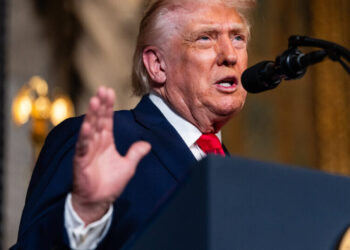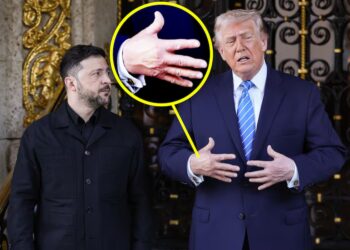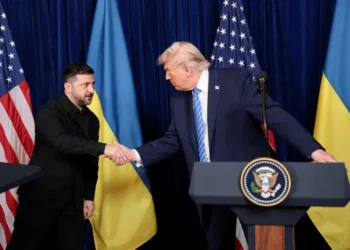‘More evidence of a cover-up’: Trump’s ‘flagrant’ violation of the law stuns analyst
President Donald Trump’s latest “flagrant violation” of the law left a Democratic analyst stunned on Sunday. Last week, the Trump...
Trump Says the U.S. Struck a ‘Big Facility’ in Campaign Against Venezuela
President Trump said in a radio interview that the United States had knocked out “a big facility” last week as...
77-year-old gunman killed after opening fire at Idaho sheriff’s office, injuring 3
A 77-year-old gunman opened fire at an Idaho sheriff’s office — injuring three people before he was killed in a...
Trump’s Bruises Spread in Blow to Leavitt’s ‘Hand Shake’ Claim
President Donald Trump slathered a fresh coat of makeup on his right hand for another round of peace talks with...
Zelensky Slyly Shuts Down Trump’s Tacky Mar-a-Lago Bragging
Volodymyr Zelensky shut down Donald Trump’s Mar-a-Lago touting following their Sunday meeting on the war in Ukraine at the Palm...
North Korea says it tested long-range cruise missiles
SEOUL — North Korea said Monday that it fired long-range strategic cruise missiles into the sea to test the country’s nuclear deterrence,...
‘He’s completely gone’: Internet erupts after Trump’s latest ‘absolutely unhinged’ claim
President Donald Trump is well-known for making statements that stretch the imagination, but his latest claims about the war in...
Major US cities see violent crime surge as national rates plummet significantly in 2025: survey
Violent crime declined nationwide in 2025, but a new survey shows several US cities moving in the opposite direction, reporting increases...
Miranda Lambert says goodbye to beloved 15-year-old rescue dog that’s been ‘on every tour’ she’s done since 2010
Miranda Lambert is saying goodbye to a faithful friend. The country singer, 42, took to Instagram on Sunday to share...
Train Derailment Kills 13 in Mexico
A passenger train derailed in the Mexican state of Oaxaca on Sunday, killing at least 13 people, according to the...














